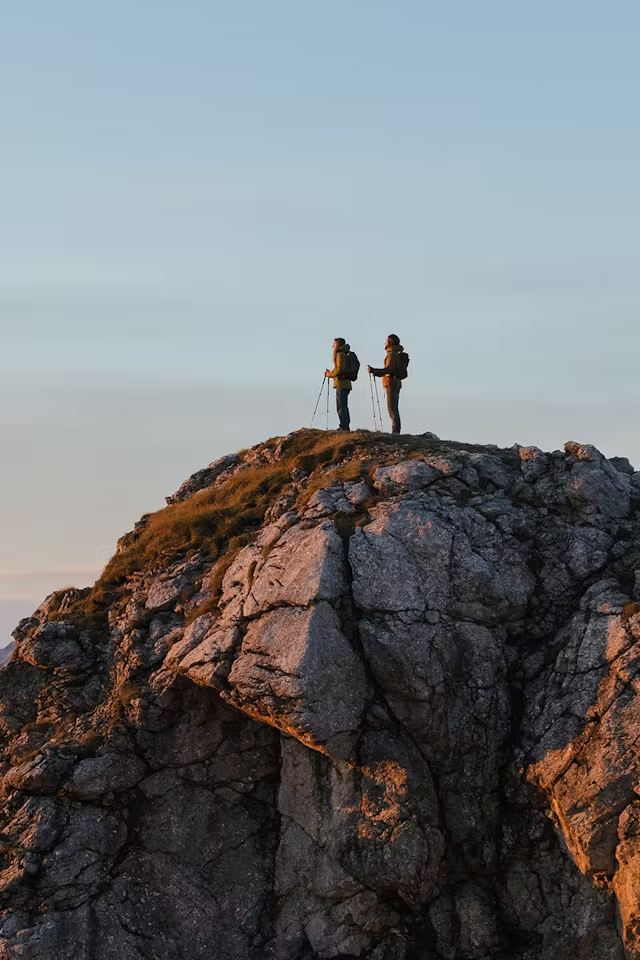I get a lot of emails about re-slinging cams:
- Do I really need to send my Camalots and C3s into BD to have them re-slung?
- Can I re-sling them by myself?
- Can I have someone with a bartackers re-sling my cams?
- Is it ok to use a piece of nylon with a knot? What about Spectra/Dyneema?
- Will you re-sling non-BD cams?
- Why does BD use that weird sew job on the C3s and Camalots and not just use a single loop of webbing?
- Many companies are now using 10mm Dyneema or Spectra… why don't you guys do that? And can I re-sling mine with 10mm?
- Many companies use double length slings, can I re-sling my Camalots this way?
Yowsa! And it goes on and on...
Here's the low-down on re-slinging cams from the QC Lab perspective:
GENERAL
Contrary to popular belief, climbing gear does not last forever. Plastics and textiles aren't as durable as metals, and need to be inspected and possibly replaced more often. Check your cam slings, and if they look beat, send them off for replacement—preferably to the manufacturer. General guidelines for replacing slings on cams are as follows:
- With occasional use: slings should be replaced every 5-8 years
- With frequent use: slings should be replaced 2-5 years.
Of course, these are just guidelines. A brand new cam sling could get dusted after one pitch if the sling ran over a razorblade granite edge and got sawed back and forth while jugging or something. Remember it's every individual climber's responsibility to check their gear often, and when it doubt, throw it out.
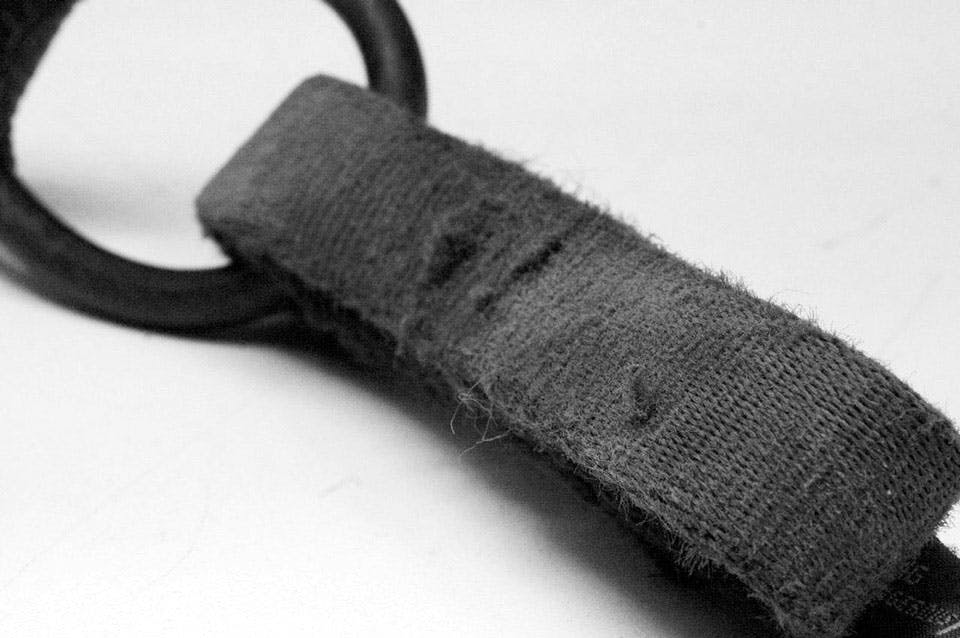
[A cam sling in time for replacement]
Camalot and C3 sling design
The previous generation of BD Camalots had a cast stainless steel tailpiece. There was a nice big surface area with a smooth radius. The webbing went through this and was sewn in a single loop. When we redesigned the Camalots in 2004 we wanted to make them lighter and also allow more surgically precise when placing. Hence was born the current thumb loop. One of the challenges came when adding the sling to the mix. The deformation of the thumb loop under load is significant. I dug up the following photos from when we were developing the new Camalots.
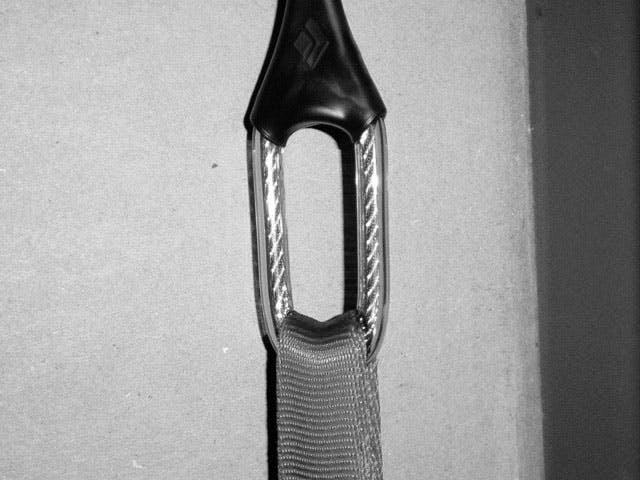
Camalot thumb loop under load.]
Just sewing a loop of 11/16" SuperTape (as was used before) didn't get us to where we wanted to be strength-wise. Why? Because when the Camalot was loaded during testing, the cable pinches down, and ultimately cut the webbing at loads less than we were happy with (gunnin' for 14 kN but only getting about 10 kN). Same with similar-width Spectra.
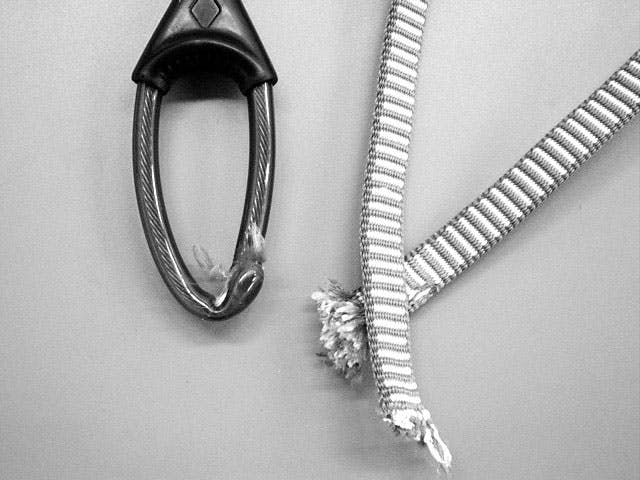
[During ultimate testing, the cable pinches and cuts a single layer of webbing (Spectra in this case).]
We also noticed that during drop testing, the cabled thumb loop would get tweaked under standard Indian Creek whipper-type loads. And no one wants to throw down significant dough on a brand new cam only to have the thumb loop formed into a "V" after just a few lobbers.
So we determined that having the double layer of webbing was substantial enough to get us the strength we were after, didn't cut the webbing and produced less tweakability (engineering term) of the thumb loop.
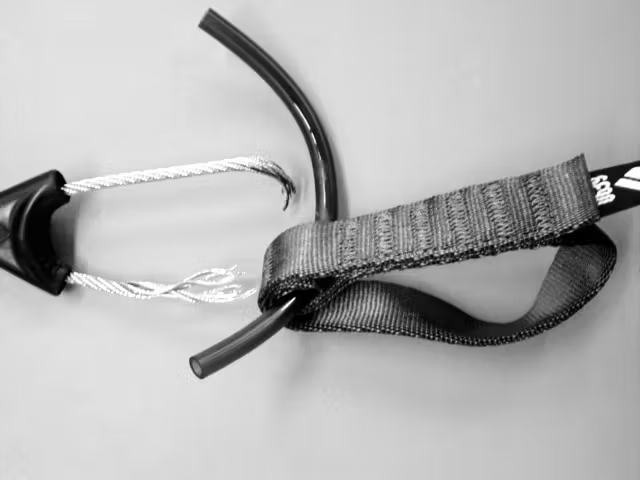
[A double layer Camalot sling doesn't cut under ultimate strength testing.]
And for those wondering, yes, we also experimented with the extendable sling design and found that when the sling is extended the cams not only failed at lower loads, but the thumb loop was damaged more easily.
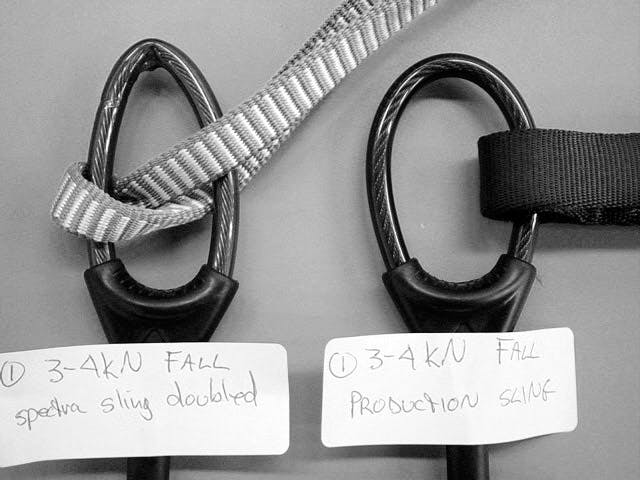
[Tweaked vs. non-tweaked thumb loop after similar falls (loads).]
Basically, in all cases the perceived benefits were outweighed by our strength and durability requirements, therefore we went with the sling configuration you see on the current Black Diamond Camalot line.
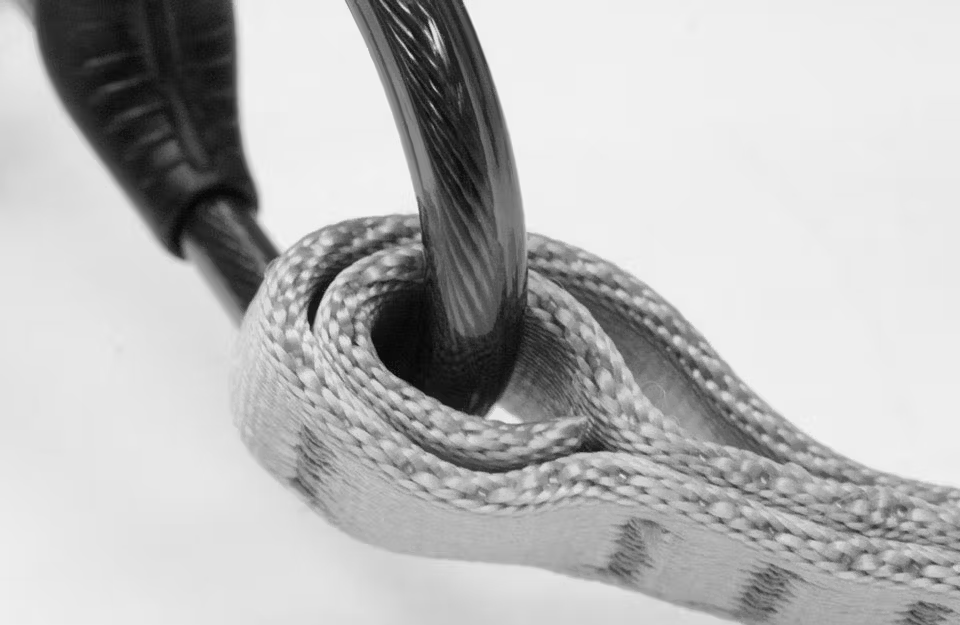
[Double-layer sling configuration shown on current BD Camalots.]
Re-slinging Black Diamond Camalots and C3s
So what and how should you re-sling your BD cams? Of course you can do anything you like:
- One-inch tubular webbing with a knot will work.
- Sending them to someone that knows how to sew structural climbing gear, and have them bartack a single loop of SuperTape will work.
- Having someone that knows what they're doing bartack a double length of SuperTape or 10 mm Dynex will work.
But it's important that you understand the ramifications of such methods:
- The strength will be compromised in all cases.
- The thumb loop will get tweaked much easier in all cases.
- BD doesn't warrant any modifications to the design of our products.
And note:
- Dyneema/Spectra doesn't hold a knot. Never use a knot with Dyneema/Spectra.
- And when it comes to sewing any structural climbing gear, mom's sewing machine won't cut it. Be sure to go to a shop that has experience with CLIMBING gear and knows what they're doing.
Bottom Line
- Check your gear often. If it's worn out, replace or repair it.
- BD Camalot slings are sewn the way they are for several reasons—don't change it.
- It's always best to contact the original equipment manufacturer of any product to ask for recommendations on the most appropriate way for repair.
We offer trigger wire repair and sling replacement on Black Diamond cams: $15 for trigger wires and $8 for new slings. More information here:
https://www.blackdiamondequipment.com/en_US/climbing%2Fspare-parts-camalot_service.html
Hope that helps explain some of the common questions when it comes to replacing slings on cams.
Whip away,
KP


